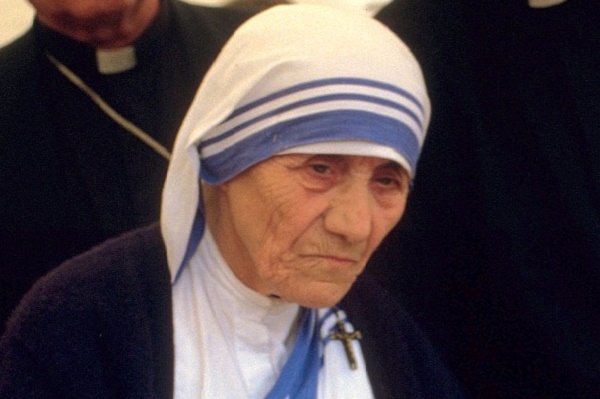
*Author's note: this article originally claimed that Mother Teresa had been part of John Paul II's papal visit to Ireland in 1979. She was not. The article has been edited to reflect this.
Until recently, I believed that I had once been in the presence of Mother (soon-to-be-saint) Teresa. Pope John Paul II visited Ireland in September 1979. Around a million people turned out to see them in Dublin’s Phoenix park, with a similarly huge number turning out in Knock, County Mayo, the scene of an alleged apparition by the Virgin Mary.
I had assumed that my family had brought year-old me along, but I was wrong. My mother, not unreasonably, had thought taking a babe-in-arms to such a throng might be more hassle than it was worth, and left me back at home. More importantly, and crucial to my false memory, Theresa wasn't actually on that trip, though she loomed so large over the Irish consciousness in the 80s and 90s it seemed reasonable to assume she had been for all these years.
Teresa was a massive star – not just in the Catholic word – due to Malcolm Muggeridge’s absurd idolisation of her in the BBC documentary “Something Beautiful For God”, and a Nobel Peace Prize in 1979. As a media celebrity, she fitted John Paul II’s outward looking rock n roll papacy perfectly. She was from a then-Communist country, like John Paul, and virulently anti-Communist herself. She was also, like John Paul, passionately anti-birth control and anti-abortion.
Mother Theresa’s job throughout John Paul's papacy on was to quell the dark stirrings of female emancipation in Ireland.
The Vatican saw Ireland, with its bans on divorce, contraception and abortion, as a bastion of the true faith: should Ireland fall to the forces of feminism, the cause could well be lost. In 70s and 80s Ireland, dangerous enemies of the Irish state such as Mary Robinson and Nell McCafferty had begun making noises about women taking control of their own bodies, a seditious idea in a country still then defined by its piety.
In the early 90s, Theresa was sent to Ireland, just as the availability of contraception was liberalised. Teresa’s message then was clear: “No abortion in Ireland, and no contraception either.” This, remember, in a country whose constitution fetishises motherhood and the traditional family above all else, including the rights of women.
Teresa’s alleged saintliness is based on her apparent concern for the poor and sick, though as Christopher Hitchens and others pointed out many times, she was more interested in harvesting their eternal souls than tending to their temporal needs – yet another Catholic who seemed to take glee in misinterpreting the phrase “Suffer little children to come unto me”.
Her real use to the Vatican lay in her power as a weapon against women. How, after all, could one say that the church’s policies were anti-woman when the most saintly woman since the virgin herself was the most enthusiastic preacher against birth control?
The news that Teresa has had a second miracle attributed to her, thus opening the way to canonisation, is a signal that the Holy See’s war on women is still very much on. Saint Teresa will be an essential part of that war.
Pope Francis has done a remarkable job convincing liberals and non-Catholics that he is somehow a reforming force in the church. But, like John Paul in the early years of his papacy, Francis is an excellent public relations man, good at putting new wrapping on the same old packages. His apparently reconciliatory statements on homosexuals and divorcees in the church are in fact the same old demands for repentance, but couched in cuter language. Francis is the son of John Paul, a culture warrior with a winning smile.
The rubberstamping of Teresa’s new miracle and her coming sainthood show us the truth about the grinning Argentinian: Francis is a reactionary pope pursuing a reactionary agenda.